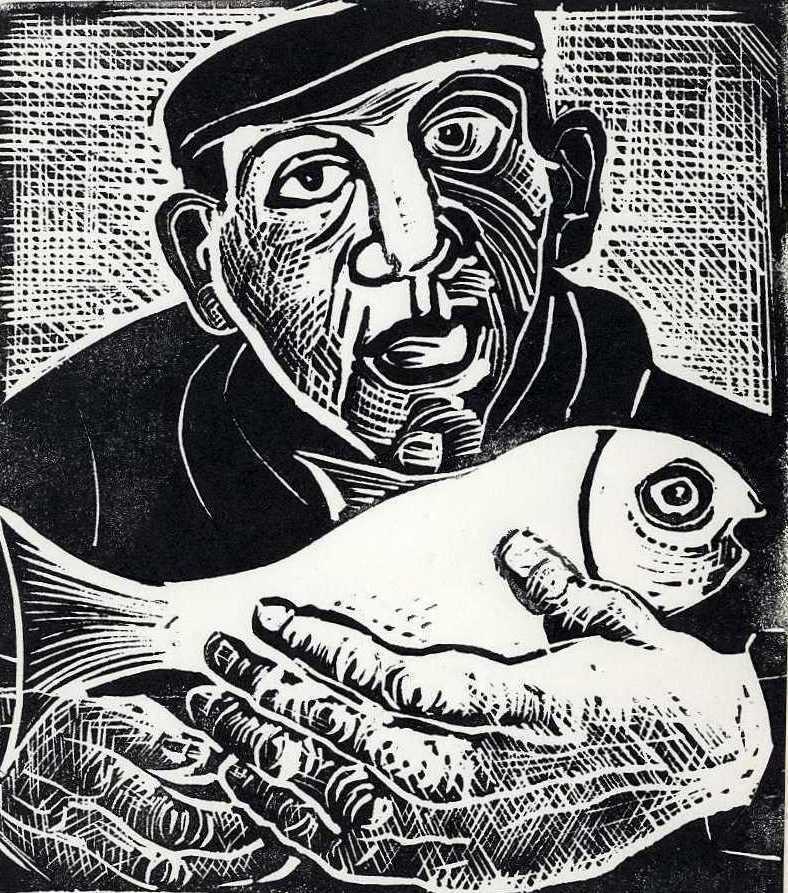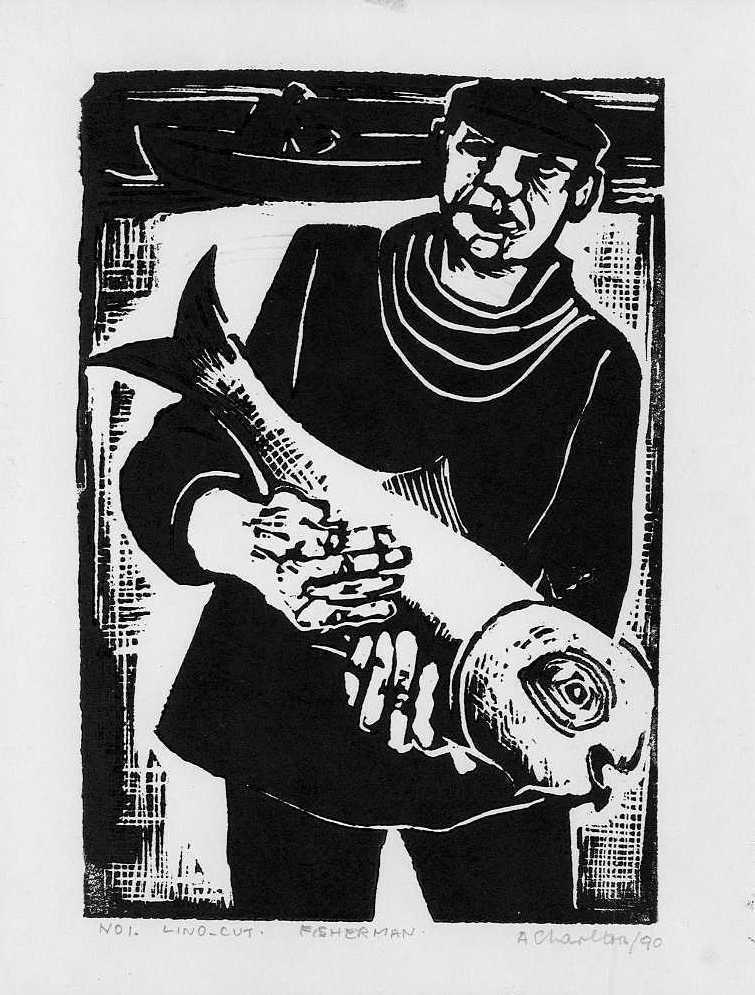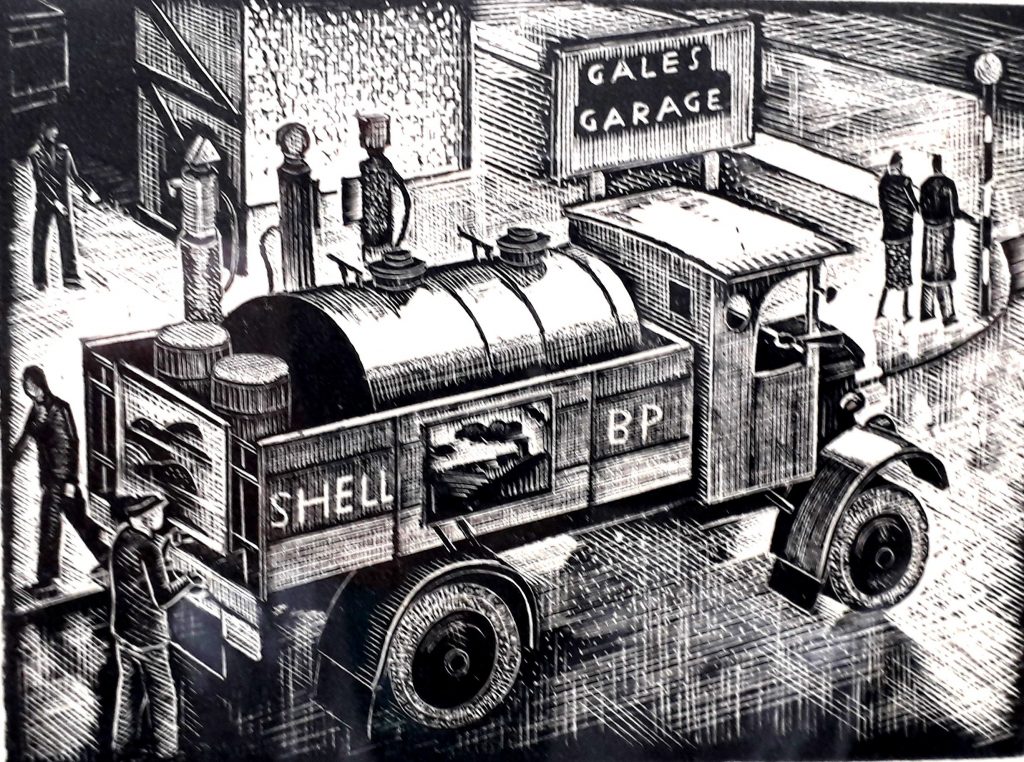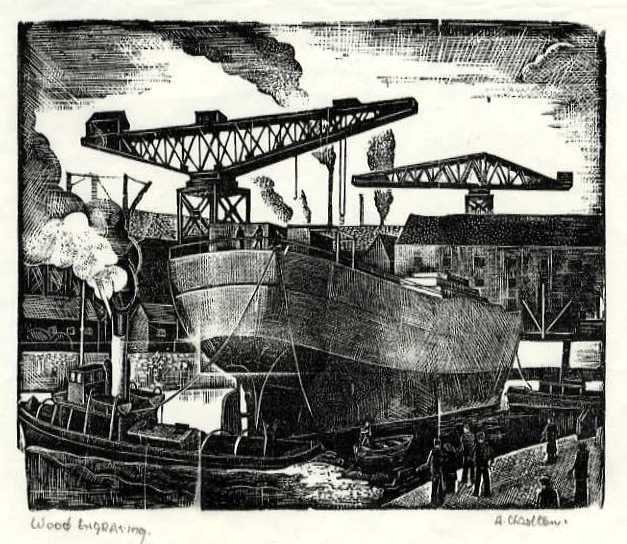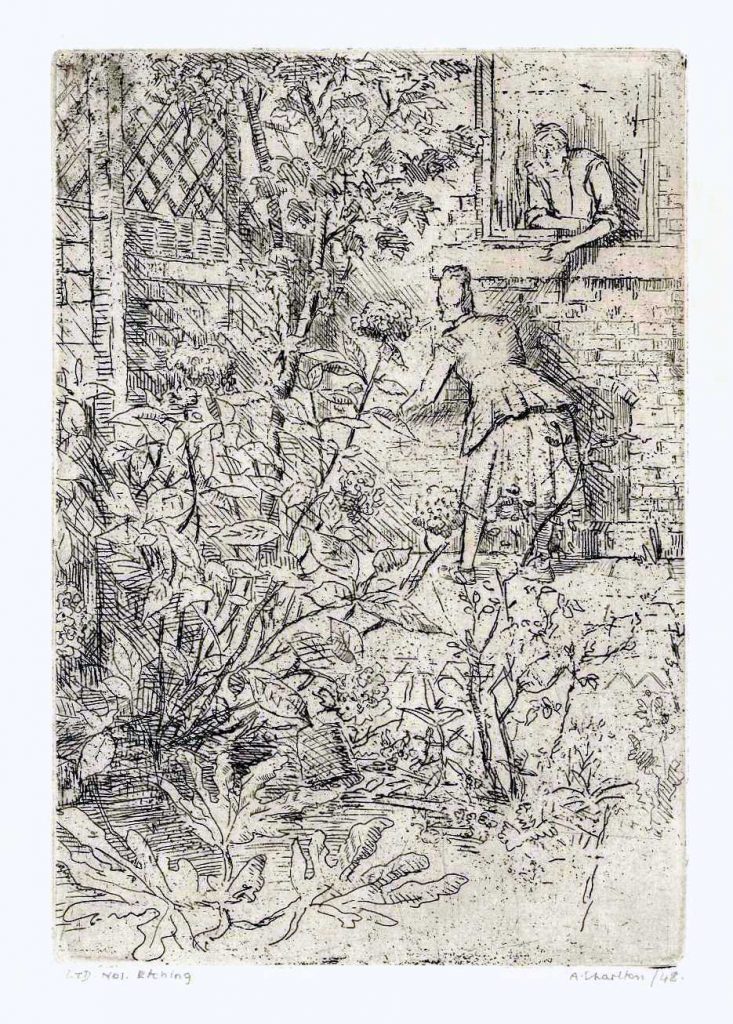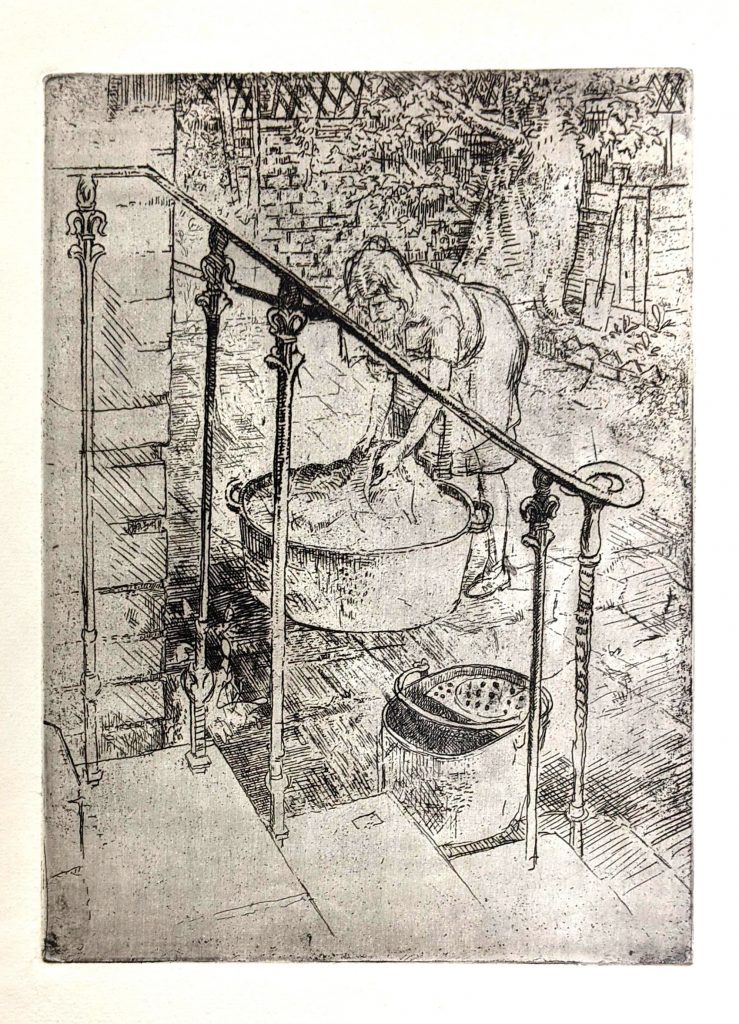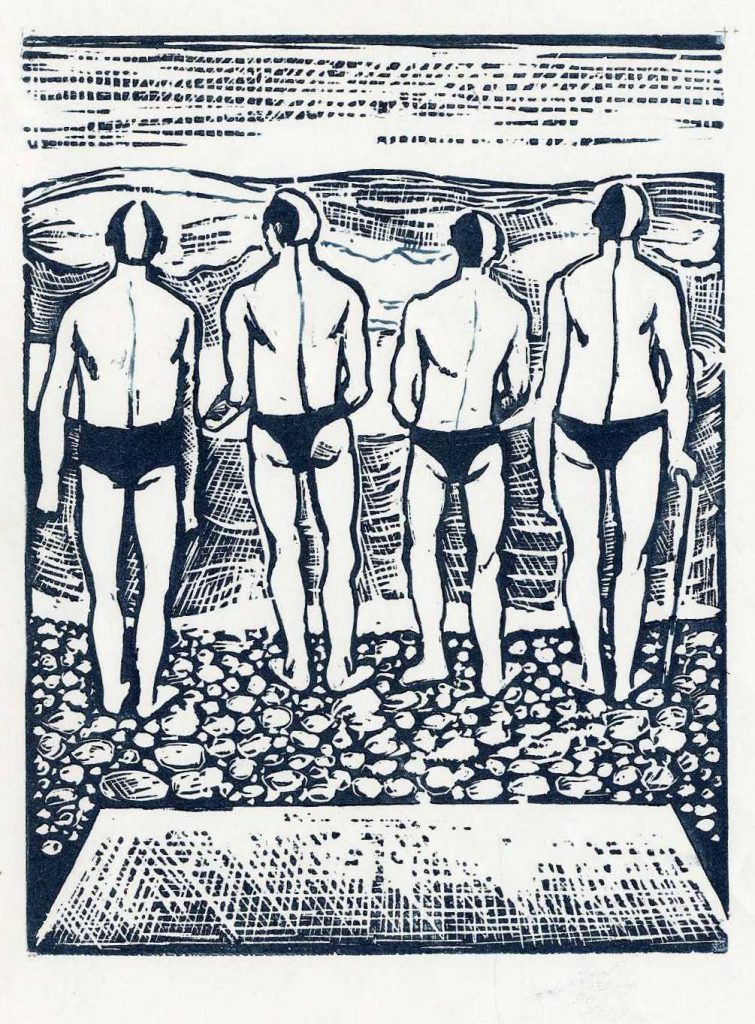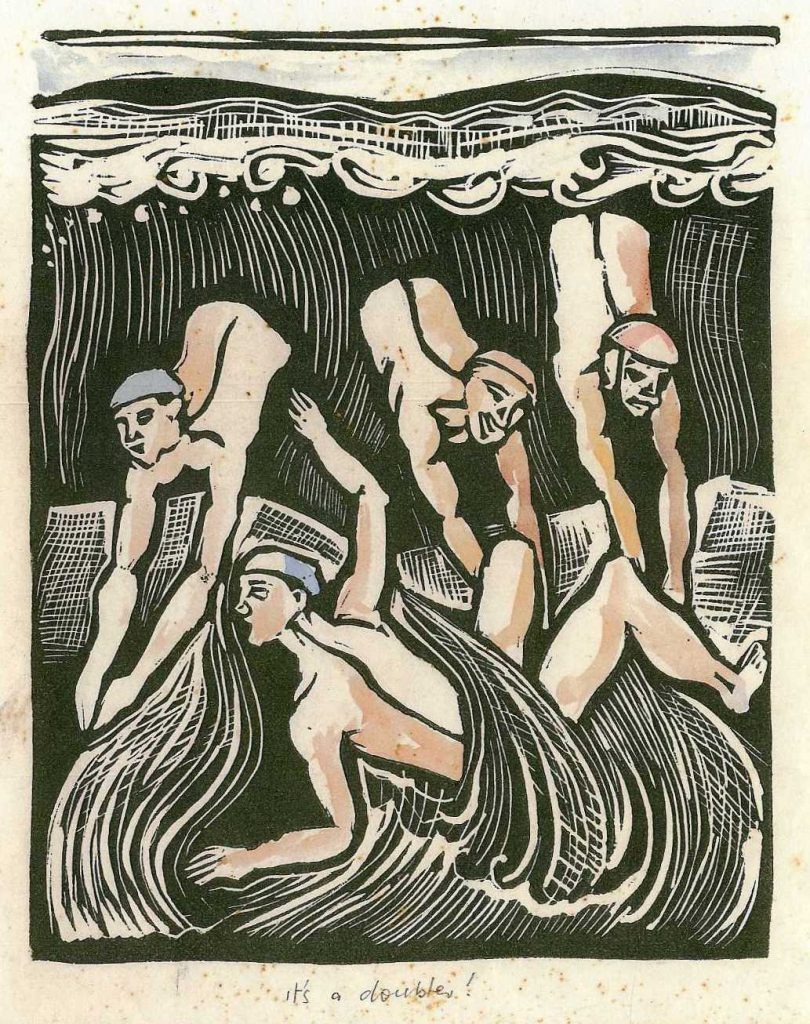from Hartlepool to Swansea – the Early Years
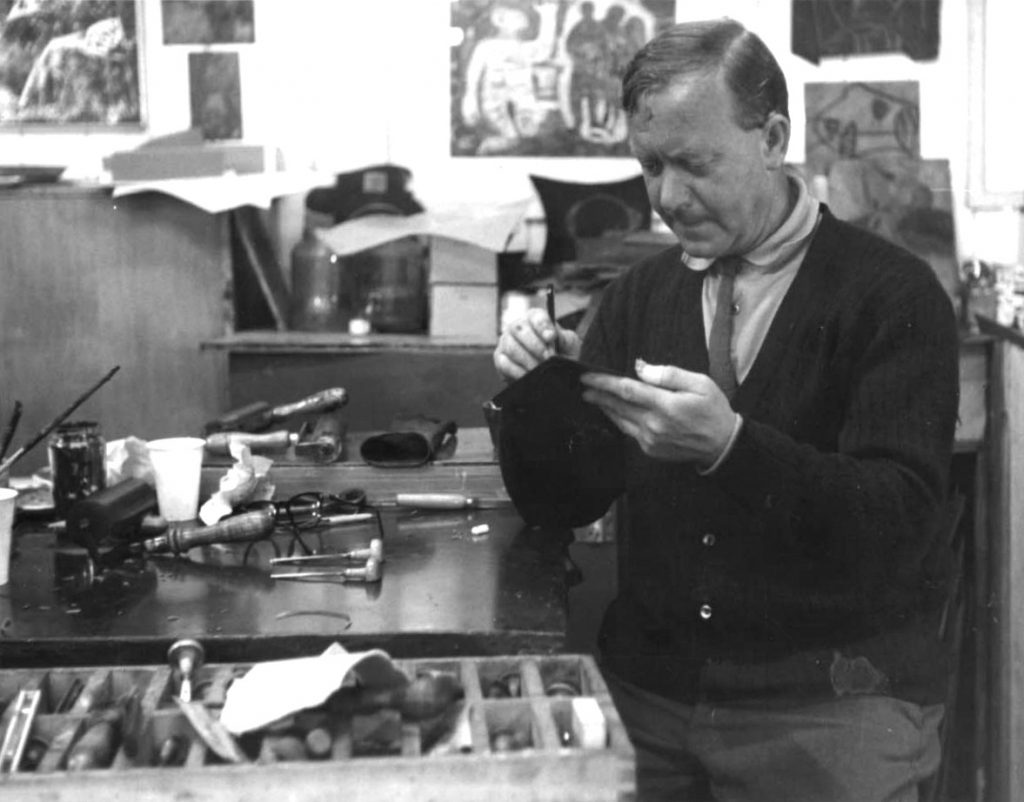
Arthur Charlton (1917-2007) has described his images including doves which he produced in the 1950s as belonging to his “pacifist period”. Certainly the dove is a motif used in the post-war Peace Movement for which Picasso produces a memorable example and the Spaniard attends the Peace Congress in Sheffield in November 1950. There are also those of pigeons employed by the pacifist Ceri Richards (1903-71) in his Trafalgar Square paintings of the period and his successor at Cardiff Art School Eric Malthouse (1914-97) starts to use the same birds when transitioning to his more modern style. Two examples by Charlton are the portrait format ‘Boy with Dove’ and the landscape format ‘Boy with Doves’ [see nos 36 & 37]. The latter (which is reproduced in Kirstine Dunthorne (ed), Drawn From Wales: a School of Art in Swansea 1853-2003 (2003), p. 66) shows one of the three doves in a cage and this provides us with a connection to the artist’s statement that such prints were influenced by his wartime experiences.
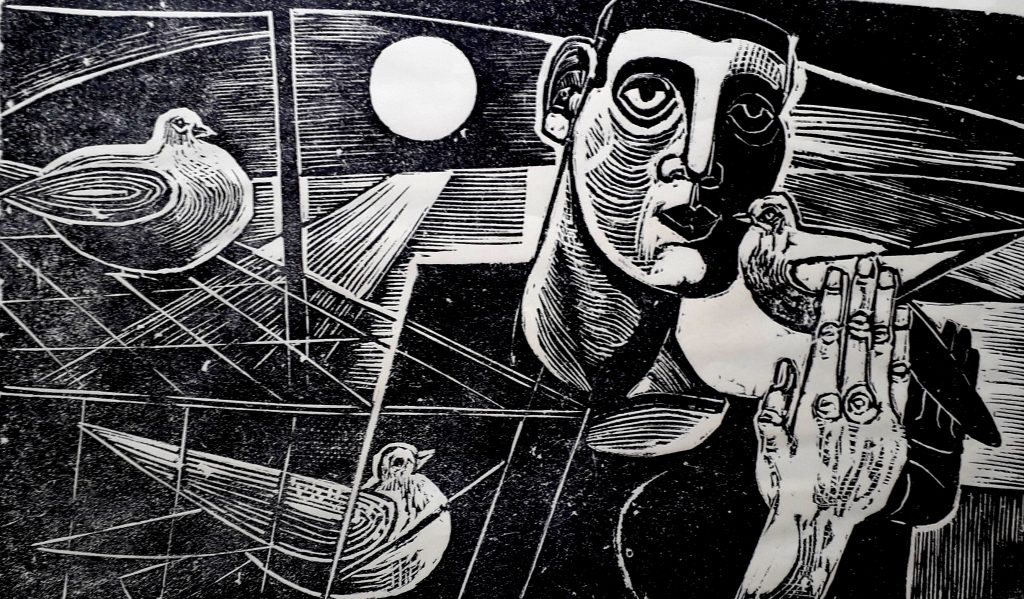
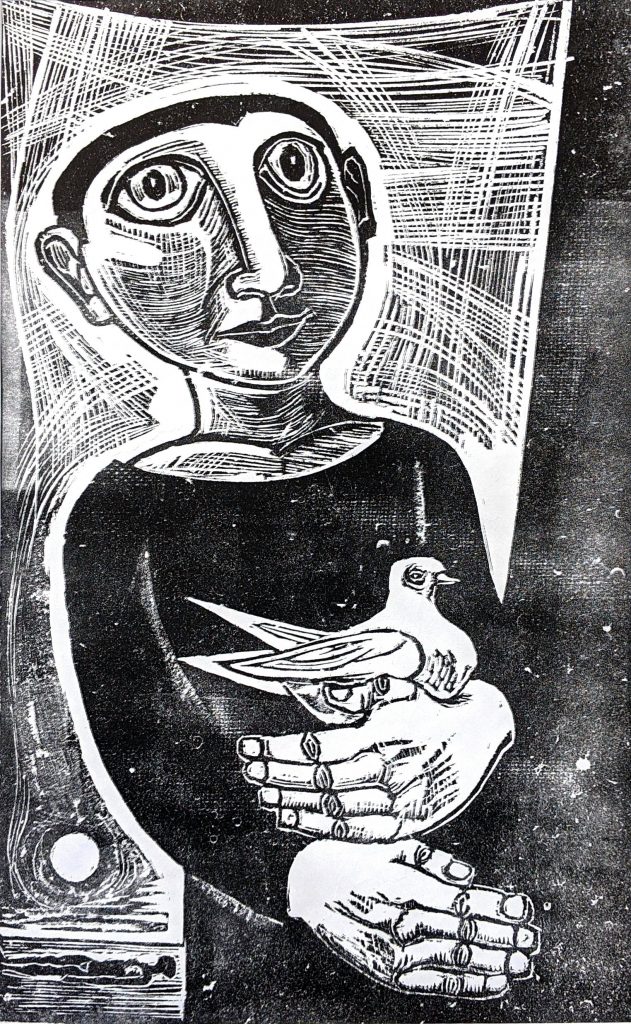
When Charlton applied to the RAF, he was described as very fit: “I volunteered to join the Air Force in January 1940. I was so ‘A1’ that the doctors couldn’t believe it when they examined me.” It was in the RAF that he became known as ‘Andy’ and he kept his new forename for the rest of his life. “I dropped out of an American ‘Liberator’ aeroplane and became a prisoner of war. I had been over Germany more than thirty times.” Shot down off the North African coast, he was a prisoner for over three years, firstly of the Italians and then of the Germans in Stalag Luft IV B until he was freed by the Russian army in April 1945. At eighty-five, he recalled some of the activity in the German camp:
“I took an art class. We used to publish a newspaper, so they used to just stick my drawings (for instance, of whoever scored a goal) in the place allocated. The better ones I later bequeathed to the Imperial War Museum. Many of these were done on biscuit wrappers before the Red Cross sent out to us good quality paper.”
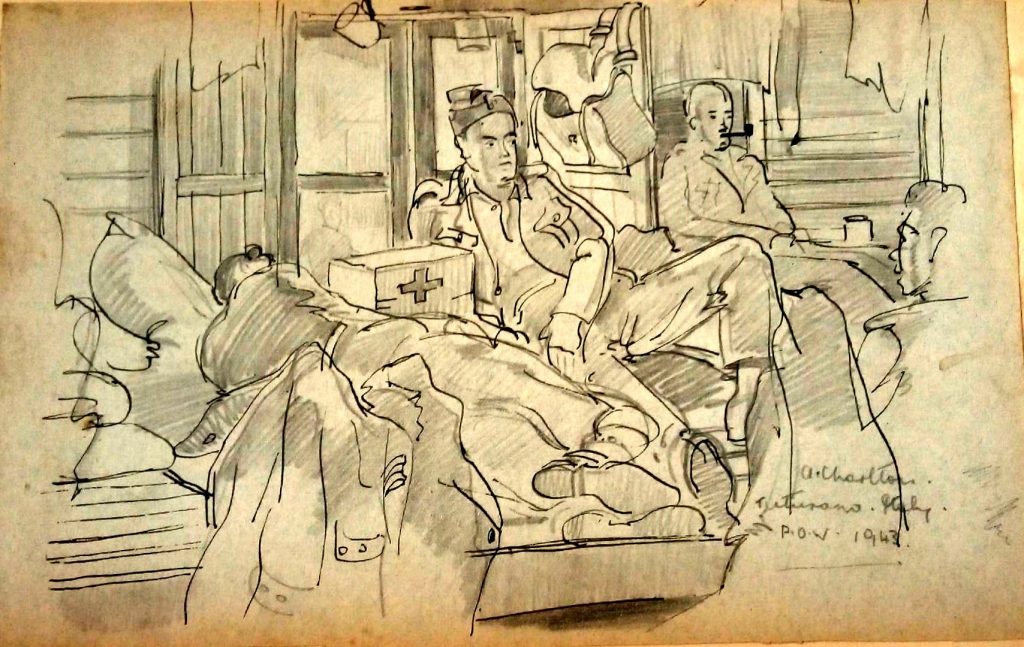
His resourcefulness regarding materials again came into play in his expressionist linocuts ‘Boy with Dove’ and ‘Boy with Doves’. Look closely because the mottled and pitted effect within them is the result of him recycling the pock-marked linoleum floor from the corridor of the Deffett Francis Gallery which, he has said, produced an “interesting effect”.
The Deffett Francis Gallery was on the top floor of the ‘new’ Swansea Library in Alexandra Road which was built in 1887 and opened by William Gladstone. This large building also included Swansea School of Art and Crafts to which Charlton was appointed in the autumn of 1951. Six months previously David Bell (1915-59) had become the new curator of the Glynn Vivian Art Gallery which lies directly opposite. His responsibilities included the Deffett Francis Gallery and in the December of that year, in the South Wales Evening Post, he criticised the space as being in “a deplorable state” and rarely visited. In the following Autumn, the use of the Deffett Francis Collection of prints and drawings was reassessed by Edward Croft Murray, the British Museum’s Deputy Keeper of Prints and Drawings, resulting in “the more interesting of the drawings [being] transferred to the Glynn Vivian Art Gallery” and the “use of the Deffett Francis Gallery by the School of Art was regularised under a special arrangement.”[David Bell, Guide to the Collections of the Glynn Vivian Art Gallery Swansea (1959), p. 14]
By 1958, the Deffett Francis Gallery was rented to Swansea College of Art (as it had recently become) and Charlton recalls that there was “a great to do” as a result of David Bell being instrumental in relinquishing the Glynn Vivian’s hold on the space. Bell, who was also a Royal College of Art graduate, was “sympathetic … and used to come into the art school”. In the Spring of 1952, he arranged for Room Two of the Glynn Vivian to be “rented to the Education Committee for the use of students at the Art School” and five years later, he organised an exhibition of Some Swansea Artists in the gallery. This consisted of works by nine members of the Swansea School of Art staff. Presented alphabetically in the accompanying catalogue, Arthur Charlton was listed first. He showed ten pieces, the first six of which are coloured prints, followed by a chalk and wash titled ‘Back Stage, Covent Garden’ and an oil called ‘Old Pier, Hartlepool’ followed by a sheet of engravings and a sheet of etchings. None is dated in the catalogue. One of the coloured prints (which dates to 1951) is ‘Fisherman’, a favourite subject of his, as demonstrated by his monochrome wood engraving and linocuts with the same title [see nos 6, 16 & 18].
Charlton’s wood engravings are early works [see nos 1, 2, 3 & 5].
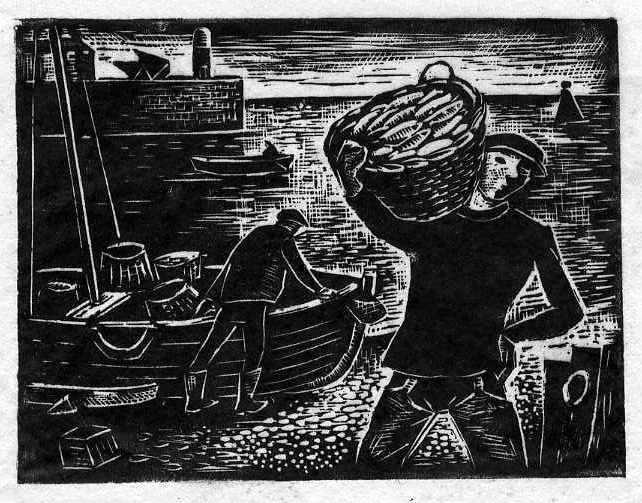
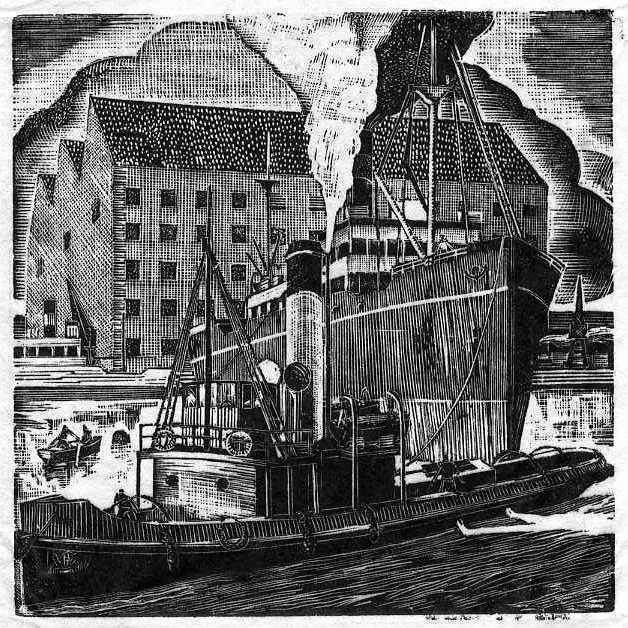
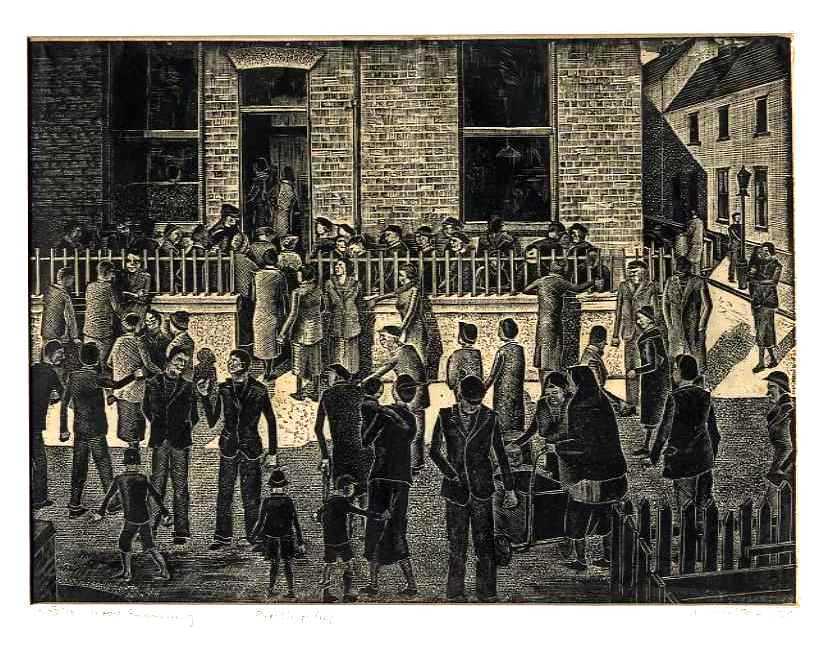
He was born in Hartlepool, County Durham, on 27 February 1917 and attended the local art school in the economically and socially tough years of the Thirties: “I had a bursary to West Hartlepool School of Art in my fourteenth year. I remember walking two miles through the docks, the boats and the swell of the water. That was my start, and my parents supported me.” His father was a carpenter and joiner and his brother a ship welder making propellers, whilst the young Arthur himself worked on a building site for a time. It is worth bearing these facts in mind when looking at his intricate and authentic wood engravings of ‘Parish Relief’ and the ships in Hartlepool docks. These are his realist works of the immediate pre-war period, whereas the wood engraving ‘Serpentine, London’ dates to 1947.
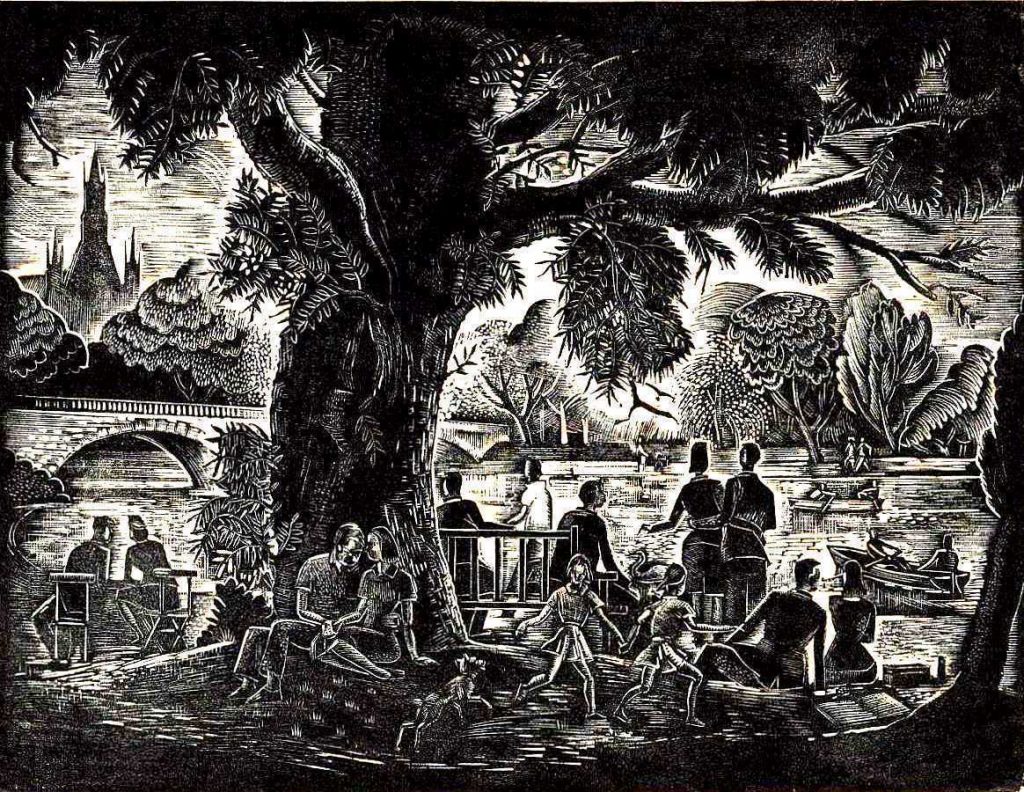
It too is intricate but the mood has changed. In the Autumn of 1945, Charlton’s war was over and he was a student at the Royal College of Art. The image belongs to that rich body of mid twentieth-century English wood engraving and related works epitomised by the artists Edward Bawden (1903-89), Eric Ravilous (1903-42) and Paul Nash (1889-1964). They had taught at the Royal College and transmitted their expertise and vision to contemporaries of Charlton like, for example, the Staffordshire-born James Bostock (1916-2006) who had trained under them there immediately prior to the war. This can be seen by comparing Charlton’s early wood engravings with those by Bostock made in the late Forties and early Fifties. Also belonging to Charlton’s London period are two delicate, domestic etchings both of which are simply titled ‘London backyard’ [see nos 10 & 11]. They depict a very different world from that in the aquatint ‘Sea Coal’ showing County Durham locals gathering fuel on the beach [see no 7].
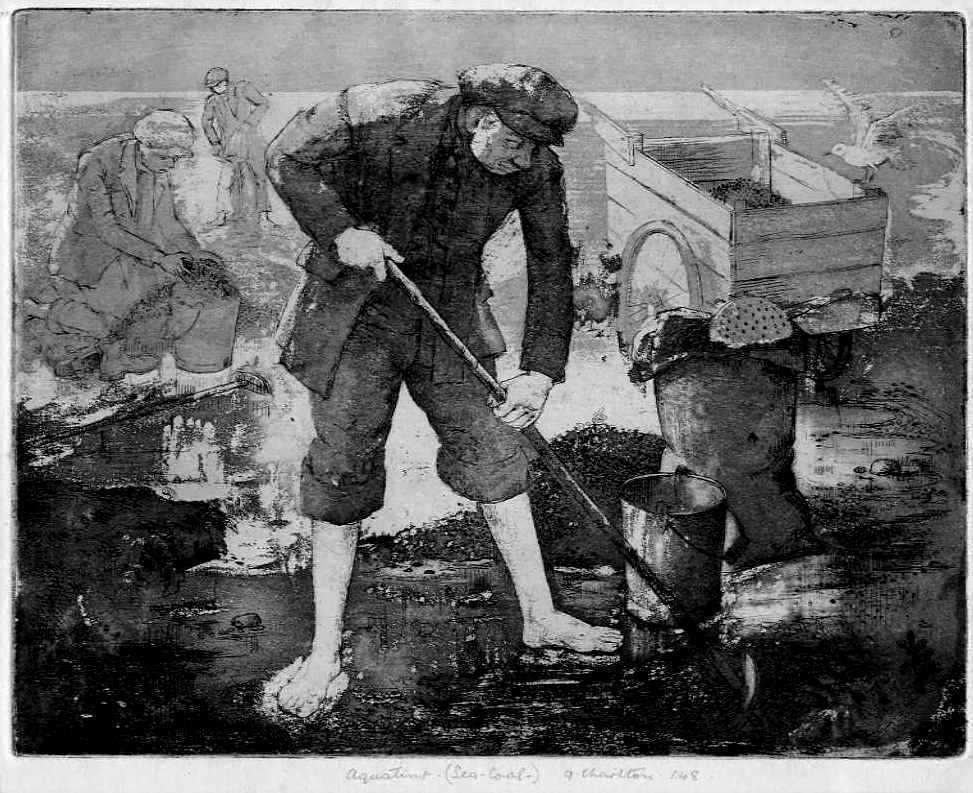
Ronald Cour (1914-78) is the second artist listed in the 1957 Some Swansea Artists exhibition. Charlton states: “The first life class I attended at the Royal College, Ronald Cour put up his easel next to me and we became friendly.” One of the models there was Quentin Crisp and Andy lent his drawing of him to Ron. Cour was studying sculpture and was a year ahead of Charlton. He was from St Thomas on the east side of Swansea overlooking the docks and, having studied at the art school, he returned to teach there in 1947. It was through him that Charlton came to the town. Charlton took over Ron Cour’s childhood home in Osterley Street, Danygraig, St Thomas, and the Swansea-born painter Alfred Janes (1911-99) — another of the 1957 staff exhibitors — supplied him with a gas heater. The docklands were still quite busy and they reminded him somewhat of his home town. Charlton and Cour had frequented the pub as fellow art students and the habit resumed. Their haunt was ‘The Vivian Arms’ in Sketty Cross; for three nights of the week in the case of Charlton whereas the Mumbles-born painter Kenneth Hancock (1911-78) “used to come in at ten to ten every night”. Charlton described him there as “uncomfortable … unfortunate” perhaps because, although he too was a former Swansea School of Art and Royal College of Art student, he occupied a senior position, having been appointed principal of the art school upon his return from the war in 1946. Hancock gave Charlton a mural commission of a harbour scene for a local school, which was produced in the School of Art, and he exhibited ten paintings (mostly portraits and flowers) in the 1957 show. Charlton owned a Hancock titled ‘Orchids’.
Charlton and Cour were accompanied to ‘The Vivian’ by their wives Tina Charlton, born Bettina Anne Pacey, and Glenys Cour, née Carthew (b 1924). Charlton had met his wife, who hailed from Sheffield, at the Royal College. In 1947, he produced an aquatint of her, lying on a chaise longue, which is full of patterned fabrics.
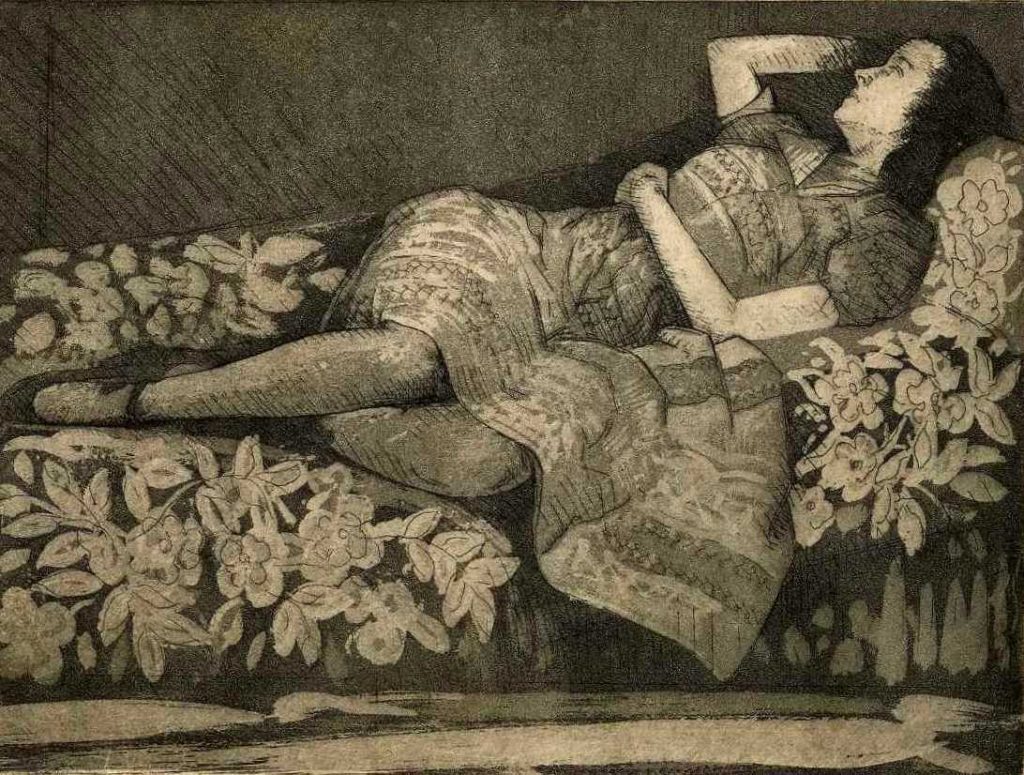
This is ‘Tina Reclining’ [see no 8]. Their son Tony Charlton relates:
“My father’s London years in the late 40s and early 50s are very interesting from an artistic viewpoint. I was born in the Kensington house (44 Pembroke Road) that was the birthplace of the so-called ‘Kitchen Sink’ school of painting. My parents shared the house with their artist friends Jack Smith, Derrick Greaves, George Fullard and Les Duxbury. The house was bomb damaged and quite rudimentary inside. The London backyard etchings were produced there.”
Tina specialised in printed textiles at the prestigious London college, had a rare fourth year and was awarded a silver medal, yet in the Swansea pub “she was not brought into conversation because she was not a painter”. Glenys Cour had studied illustration at Cardiff College of Art under Ceri Richards but was painting and drawing and by 1958 her paintings are being praised by David Bell in that year’s annual exhibition of the South Wales Group. Both women were starting to do some teaching at the art school in Swansea but neither of them nor any other female member of staff was included in the 1957 show. Tina Charlton was “very sympathetic to students”. She taught fabric printing to the teacher training students. She worked in one of the wide corridor spaces at Alexandra Road where she had “two big fabric tables which took up a lot of space. She also gave talks (to the fashion students) on wools, colours and dyes. The division of labour between the men and women was, if you like, old-fashioned”.
Some Swansea Artists was a picture-based exhibition and it included the last ever showing for Will Evans (1888-1957) who died six months later, in October 1957. His exhibits were mainly watercolour paintings of the area including two of bomb damaged Swansea. Although head of lithography, he was by then a part-time staff member and was assisted, in part, by Eifion Jones who was “an excellent typographer” and therefore not one of the staff exhibitors. Charlton produced a lithograph from around this time titled ‘Miners with Whippets’ which he stated was an industrial scene based on the south Wales locality [see no 15]. Will Evans, through his links with the commercial sector, was able to provide Charlton with tinplate and mild steel for him to make etchings. Evans “used to come in on a Saturday morning for his class. At noon we would go for a drink to the Mackworth pub at the top end of Wind Street. He worked for an American company which had big roller mills and was geared up to printing a design for different firms and supplying all over”.
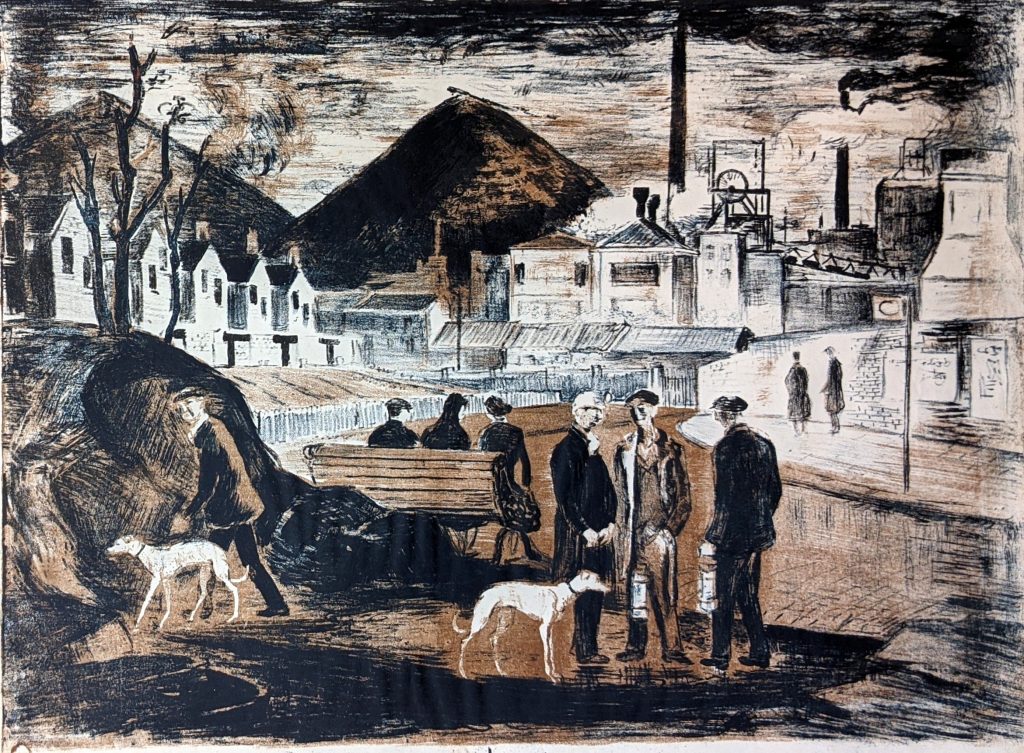
Despite the socialising, Charlton felt that he stood apart as a northerner. He played golf and did go to Wimbledon Centre Court once with the Swansea-born William Price (1921-76) who was another staff colleague and 1957 exhibitor: “Billy Price was a Prix de Rome scholar and a good draughtsman”. Charlton used to be part of a group of four men who regularly went swimming in Caswell Bay which included the Swansea-born and -trained painter George Little (1927-2017) [see nos 47 & 48] and his love of the Welsh coastline and Gower in particular can be seen in a number of his later, and somewhat more abstracted, colour prints [see various nos]. However, he was not a member of Swansea Art Society or the South Wales Group, nor was he represented by a gallery. As a result, many of the prints in this show have never be seen previously apart from by family and close friends. He taught design and crafts full-time for thirty years: “At first, I taught the ATD class. I also had NDD Illustration students and a life class. Having been there all day, I’d go home for tea, and then I’d go back in. Paul Croke, the ceramicist, stood out as a student. He was doing wood engraving and his work was exhibited in London.” Charlton retired in 1982 when the facilities were being transferred from Alexandra Road to the Townhill campus. His life class models initially consisted of “girls who had never stripped off”, with male models arriving only later. His main duties over the years were printmaking, of course, and he set up “a screen-printing department which impressed the HMI from north Wales”. In retirement, he had a solo show at the Taliesin Gallery, Swansea University, in 1984 — in the catalogue for which he stated that his “approach to art is through line, the play of light, and the reality of landscape” — and he continued to make prints up to about the year 2000.
Perhaps the image that will resonate most, certainly locally, is his ‘Vetch Field’ linocut [see no 46]. Amazingly, it is the only known image made by an artist of a soccer match at Swansea’s now former ground during its ninety-year history. Dating to the Fifties, this evocative and energetic, male-dominated image captures a now-vanished time and society. In recent times the Vetch has been part of a socially-engaged art project in conjunction with the Glynn Vivian which has turned it into a community space, one which is now filled with rather different sights, sounds and voices.
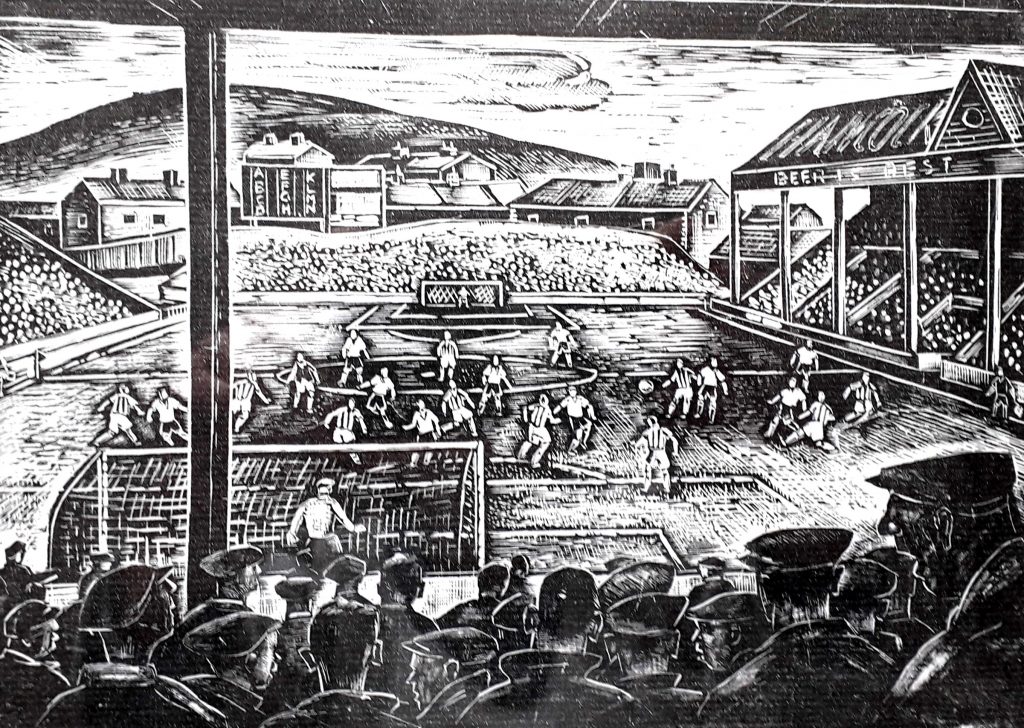
Text copyright © Ceri Thomas, 2021
[The quotations in this article, unless stated otherwise, are taken from a recorded conversation with Andy/Arthur Charlton conducted by Ceri Thomas in the artist’s Swansea home on 19 September 2002. Extracts are published in Kirstine Dunthorne (ed), Drawn From Wales: a School of Art in Swansea 1853-2003 (2003), p. 61, and in the entry on Charlton in Peter W Jones and Isabel Hitchman (eds), Post-War to Post-Modern: A Dictionary of Artists in Wales, (2015), p. 141]
There are a limited number of Arthur Charlton original prints for sale at Emma Mason | British Prints | Eastbourne . Established in 2004 specialises in work by artists and makers working in Britain from 1950 onwards, with an emphasis on printmaking
Arthur Charlton was a generous, passionate teacher who inspired many students during his career at Swansea College of Art. Some of his ex-students share their memories and work made during his teaching years in the 1960s and 70s https://swanseaprintmakers.com/andy-charlton-by-his-exstudents-the-legacy/]
